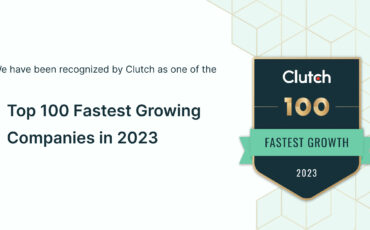For most front-end developers, Angular is a well-known framework made for building applications. AngularJS was developed by Google in 2009 and version 1.0 was released in 2012. Since then, Angular has been dominating the world of open-source JS frameworks. Quickly, it evolved to the version Angular 2.0, and now, after 5 years, the latest version is 4.0. The framework enables developers to build apps in MVC or MVVM architecture in a simple way.
What else? What makes Angular 2 and Angular 2 services a good choice for building applications?
What is Angular 2?
Angular 2 is an open-source, JavaScript framework written in TypeScript. It’s a complete remake of the original AngularJS – Angular 2 was rebuilt from scratch using TypeScript, keeping in mind the concept of having components with better performance and improved features. When compared to the previous version of the framework, Angular 2 results in better performance. It doesn’t have controllers and scope – the primary building blocks of the earlier version.
The key features of Angular 2:
- TypeScript. It allows developers to increase code efficiency and readability. TypeScript includes every function ES6 has and on top of that it adds type control. It makes the code understandable and easy to use.
- Components. The framework focuses on components over controllers. This is important if you want to maintain apps efficiently for a long time. In Angular 2, everything works around the components. They have templates, classes, and metadata associated with them.
- Services. Angular 2 provides a set of codes that can be shared by various components of the app.
- Performance. Angular 2 provides a very short loading time for the app.
- It’s cross-platform. You can easily use Angular 2 to create and run apps on desktops, Android, and iOS systems.
- Routing. The framework has improved location service and navigational model. Thanks to @RouteConfig, every route has a component linked to it, as well as an ID, which is used to create the link. Data is passed through the link.
- Data binding. In the earlier version, data-binding took a lot of time to process on the browser. Angular 2 enables programmers to control and direct the data flow easier and faster.
Why Angular 2 and who can use it?
Angular 2 is one of the most often chosen frameworks for building applications. There are many benefits it can bring to your software development process. The most important are:
- It’s easier than version 1.0, both for new developers and project veterans. You don’t have to understand the differences between controllers, services, factories, and providers. You just focus on simply building JS classes. Also, the API features less jargon than Angular 1.0 directives.
- Angular 2 is mobile-oriented. Mobile devices are getting more and more powerful, and the framework was designed for mobile from the ground up. For example, in Angular 2, touch interfaces, limited screen real estate, and mobile hardware have been considered.
- It provides amazing performance. Angular 2 alpha’s rendering performance vs Angular 1.4’s is astounding at scale. Also, performance gains can be leveraged by rendering HTML on the server, or even in a web worker. This makes Angular 2 suitable for large-scale projects.
- The framework has improved dependency injection and modularity, as well as a better QA – the debugging system is easier and so is testing.
- It provides simpler routing.
- It provides more choice for languages such as TypeScript, ES5, ES6, and Dart for writing codes.
- Its elements accelerate coding and can be used on projects on other frameworks. E.g., if you need to use the same design you have built-in Angular, in the React or Vue project, you can reuse the elements it contains without rewriting them.
- Usability is improved when compared to the earlier version. The interface is significantly user-friendlier.
- Angular Command Line Interface streamlines application development.
Thanks to all these benefits, Angular is often chosen by companies that want to build large-scale solutions for both web and mobile simultaneously. For example, most of Google’s web applications are written in Angular (Google Ads, Gmail). The framework is also used by giants like Amazon, Walmart, and Dell for their mobile applications.
When it comes to disadvantages, some developers find Angular 2 a bit tough to set up when compared to AngularJS. Also, the framework might not be effective enough in building small and simple web apps.
2 advice on how to build on Angular 2 Service
Today, more and more REST APIs are used, and the data displayed in the frontend is often delivered as JSON. Thus, an HTTP service can be useful for various projects. It is really helpful to collect reusable code in one place and create it modularly. Angular 2 and its services make it quite easy. If you want to start using Angular in your projects, there are some Angular 2 services best practices to follow. Let’s dive deeper into some of them!
Tip no. 1: Creating a project service
If you want to create a project service, don’t forget that you don’t need to import the component decorator. You just need an Injectable that should be imported from angular/core. All you need to do is call Injectable and export your class. Angular 2 can use the class as dependency injection.
Tip no. 2: Adding methods to the service
Start with importing the HTTP module and the response class. Both come from @angular/HTTP. Then, also import the HTTP module into your app module file. Use dependency injection to inject the class into the ProjectService. This will enable you to create a constructor function. Angular 2 will match the HTTP class to the HttpModule and it will inject an instance of that into the constructor.
Angular 2 vs AngularJS vs Angular 4 – what’s the difference?
The three versions of Angular vary and the differences are quite relevant. Below, you will find the differences thoroughly compared.
Origin
All versions are open-source frameworks for web app development.
Architecture
AngularJS follows the MVC (Model-View-Controller) architecture, whereas Angular 2 is based on the component-service architecture. Components are directives with a template. They deal with a view of the application and logic on the page. Angular 4 is based on structural directives.
Language
AngularJS uses JavaScript, Angular 2 uses Microsoft’s TypeScript, and Angular 4 also uses TypeScript (the latest versions). Angular 2 is also compatible with Dart.
Expression syntax
Angular 2 follows parentheses () for event binding and square brackets [] for property binding. It’s different in AngularJS (you need to use the accurate ng directive to add images, properties, and events) and Angular 4 which follows advanced syntax (ngIf and ngFor directives).
Routing
Angular 2 uses @RouterConfig{(…)} for routing configuration. AngularJS uses the $routeProvider.when() method and Angular 4 uses two routing methods: RouterModuleRoot() and RouterModuleforChild().
Mobile support
AngularJS wasn’t built with mobile support in mind. Both Angular 2 and Angular 4 feature mobile support.
Performance
AngularJS is the slowest when it comes to performance. Angular 2 and Angular 4 are much faster – Angular 4’s performance is improved by dependency injection. Also, in Angular 4, the size of the generated files is reduced by 60% which also increases performance. When it comes to speed, AngularJS reduced the development effort and time (thanks to features like 2-way binding). Angular 2 enables developers to build and maintain big apps because it provides a better structure and a better change detection mechanism. Angular 4 is the fastest version.
Angular 2 at RiteNRG
Interested in Angular 2 services? At RiteNRG, we work with all JS frameworks (see the comparison of Angular, Vue, and React). We’ll be happy to advise you on which framework will be a perfect match for your project. Let’s get in touch!





